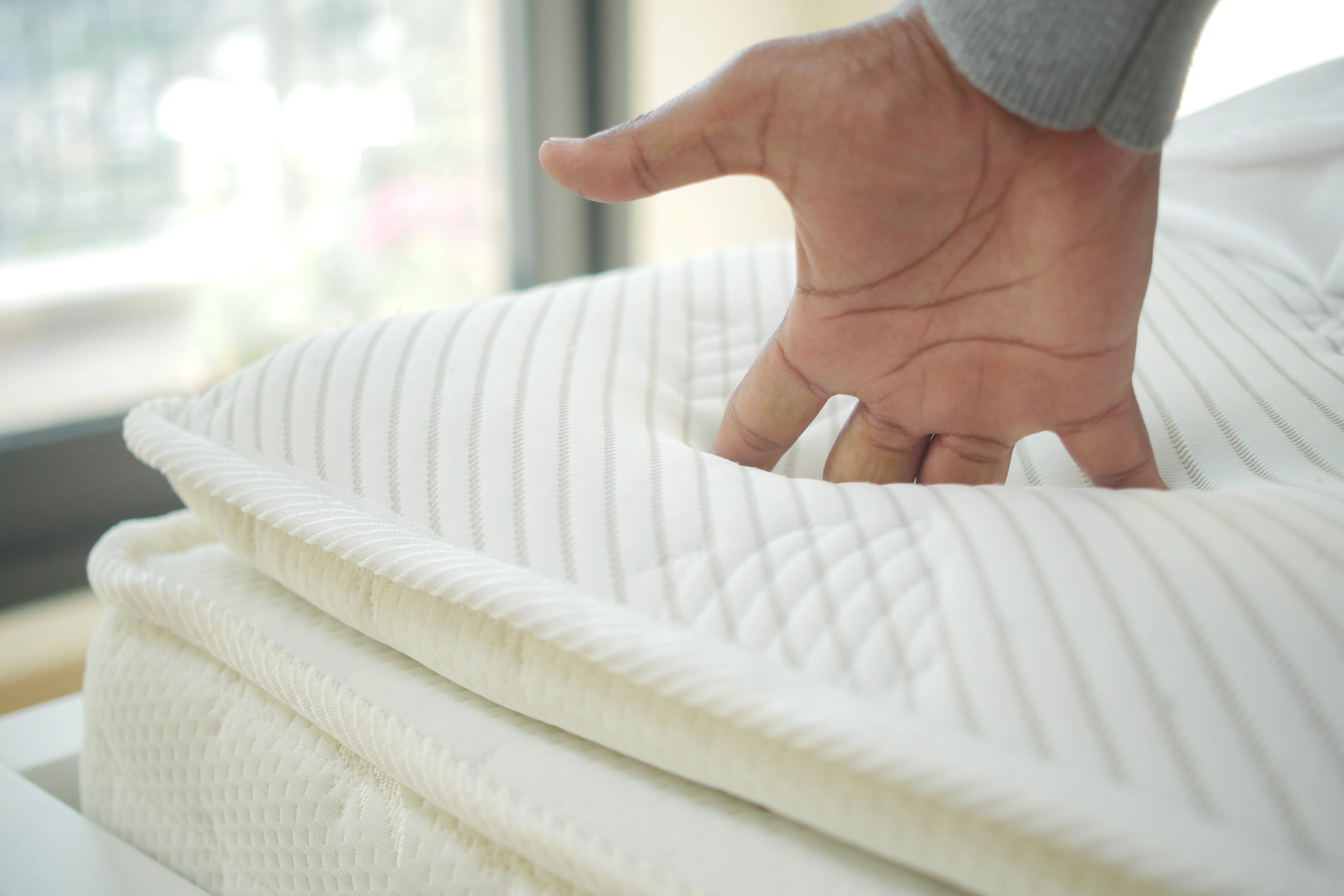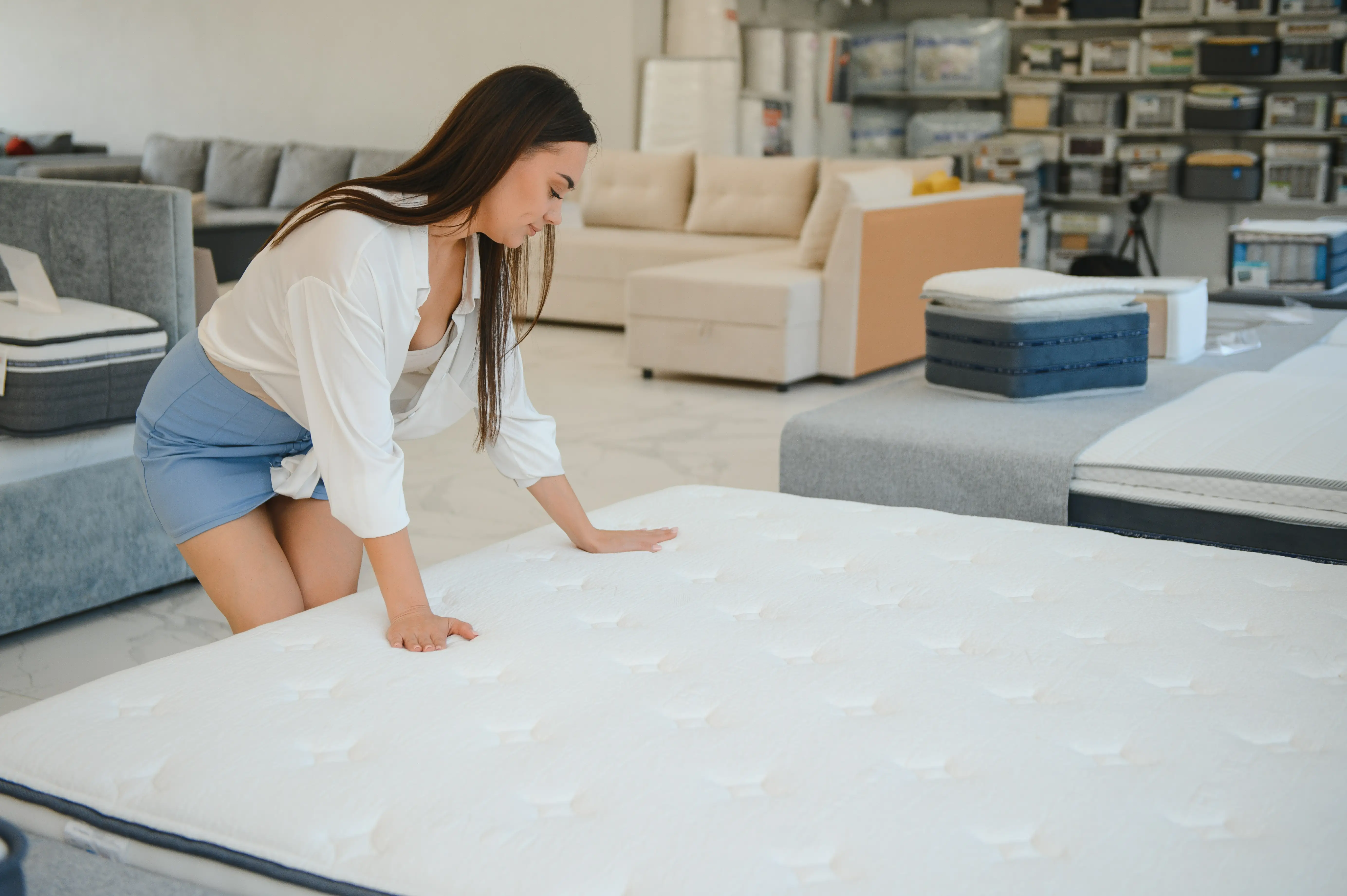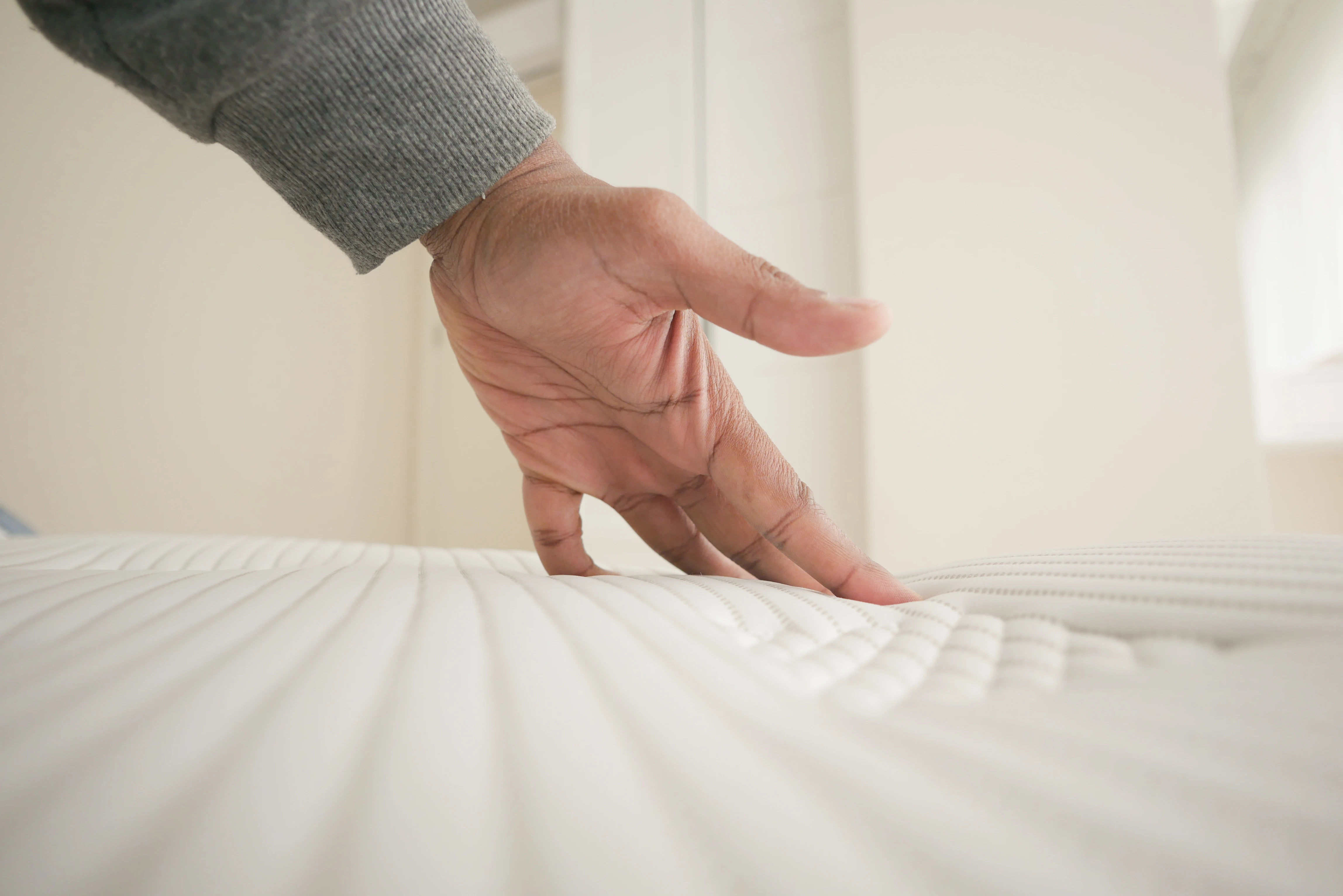Latex foam has become a go-to material in mattresses, cushions, pillows, and orthopedic products, and for good reason. It’s naturally resilient, supportive, and durable.
But when you start comparing products, one term comes up again and again: density. Whether you're shopping for a natural latex mattress or trying to choose the right pillow, understanding latex density can help you make smarter, longer-lasting decisions.
In this article, we’ll break down what latex density actually means, how it's measured, why it matters, and how to use it to choose the ideal product for your specific needs.
What Is Latex Density?

In simple terms, it tells you how much material is packed into a given space. A higher density means more latex is used, making the foam heavier, more supportive, and generally longer-lasting.
Density vs. Firmness
Density and firmness are often confused, but they are not the same. While density measures how compact the foam material is, firmness refers to how soft or hard it feels when pressure is applied.
You can have high-density latex that feels soft or low-density latex that feels firm, depending on how the foam is manufactured. Firmness is typically measured using the Indentation Load Deflection (ILD) scale, whereas density is purely a measure of mass and volume.
How Is Latex Density Calculated?
Understanding how density is calculated can give you a clearer picture of what those numbers on a product label mean. Here’s a simple step-by-step guide to how manufacturers (or curious consumers) can determine latex density.
Step 1: Preparing the Sample
Start by cutting or selecting a clean, evenly shaped piece of latex foam. The sample should be a regular shape, like a cube or rectangular prism, so that volume can be accurately measured. Make sure there are no air pockets or irregularities that could affect the weight or volume.
Step 2: Measuring Volume
Measure the length, width, and height of the foam sample using a ruler or measuring tape. Multiply these three dimensions to get the volume:
Volume = Length × Width × Height
Make sure all measurements are in the same unit (inches or centimeters) and convert to cubic feet or cubic meters if needed.
Step 3: Weighing the Foam
Next, weigh the sample using a precise scale. Record the weight in pounds or kilograms. This measurement, combined with the volume, will allow you to calculate the foam’s density.
Step 4: Applying the Formula
Now, plug the values into the density formula:
- Density (PCF) = Weight (lbs) / Volume (ft³)
- Density (kg/m³) = Weight (kg) / Volume (m³)
The result gives you the latex foam’s density. This number can then be compared across products to gauge their durability and support characteristics.
How Is Density Tested in Professional Labs?
While simple at-home calculations provide a good estimate, professional labs follow strict protocols to measure latex density with greater accuracy and consistency. This ensures reliability, especially for manufacturers, retailers, and certifying bodies.
Industry Testing Standards
Professional testing facilities adhere to internationally recognized standards, such as those outlined by ASTM (American Society for Testing and Materials) or ISO (International Organization for Standardization).
These standards specify the environmental conditions (temperature and humidity), sample dimensions, and testing equipment required to ensure consistent results across different labs.
Purpose of Standardization
Standardized testing ensures that results from one lab can be reliably compared to those from another. This is especially important for quality control, product certification (such as OEKO-TEX or GOLS), and consumer transparency.
It eliminates variables like moisture content or sample inconsistencies, which could otherwise distort the density reading. Standardization also helps consumers and businesses understand exactly what they’re buying, making it easier to compare products from different manufacturers.
Types of Latex Foam and Their Density Profiles

Not all latex is equal. The density and feel of the foam can be influenced by the type of latex used—natural, synthetic, or blended—and the production method—Dunlop or Talalay.
Natural Latex
Made entirely from the sap of rubber trees, natural latex tends to have a higher density compared to synthetic versions. It’s prized for its durability, elasticity, and eco-friendly origins. Natural latex produced using the Dunlop method often feels denser and more supportive, making it ideal for mattress cores or firm cushions. Typical density range is:
- Dunlop Latex: Denser and heavier because the foam settles before being cured. It has a more supportive, firm feel and is often used in mattress cores or support layers. 4.5–5.5 PCF (72–88 kg/m³)
- Talalay Latex: Talalay is processed in a vacuum mold and flash-frozen before curing, which creates a lighter, more aerated structure. It results in a lower-density, softer feel that works well in comfort layers. 3.0–4.0 PCF (48–64 kg/m³)
Synthetic Latex
Created from petrochemical compounds like styrene-butadiene rubber (SBR), synthetic latex mimics the properties of natural latex but with more consistency and lower cost. It generally has a lighter density and is less resilient over time. It’s commonly found in budget-friendly mattresses or as a component in blended foams. Typical density range is 2.5–4.0 PCF (40–64 kg/m³)
Blended Latex
Blended latex combines natural and synthetic materials, often in a 30/70 or 60/40 ratio. The goal is to balance cost, durability, and performance. Density varies depending on the blend, but it usually sits between that of pure natural and pure synthetic latex. Typical density range is 3.0–5.0 PCF (48–80 kg/m³)
Ideal Density Ranges Based on Use
Choosing the right latex density depends on how the product will be used. Different applications call for different combinations of support, durability, and comfort. Below are some ideal density ranges tailored for common uses, helping you pick the right latex foam for your needs.
For Mattresses
Mattresses require a balance of support and comfort, often using multiple layers of different densities.
-
Support/Core Layer: Typically uses high-density latex for structure and longevity.
- Ideal Range: 4.5–5.5 PCF (72–88 kg/m³)
-
Comfort Layer: A slightly lower-density latex is often used for contouring and pressure relief.
- Ideal Range: 3.0–4.0 PCF (48–64 kg/m³)
-
Talalay for Plush Feel: Ideal in pillow-top layers or zoned areas.
- Ideal Range: 2.5–3.5 PCF (40–56 kg/m³)
For Pillows
Pillows need to strike a balance between softness and neck support. Lower densities provide plushness, while higher densities offer more resilience and shape retention.
-
Soft/Plush Pillows: Great for stomach sleepers or those who like a flatter profile.
- Ideal Range: 2.5–3.5 PCF (40–56 kg/m³)
-
Medium to Firm Pillows: Better for side and back sleepers needing more loft and neck alignment.
- Ideal Range: 3.5–4.5 PCF (56–72 kg/m³)
For Seat Cushions
Seat cushions demand durability and support due to constant compression. A medium to high density ensures the foam maintains its shape over time.
-
Regular Use (Office Chairs, Dining Seats): This density offers a solid balance of comfort and support for everyday seating.
- Ideal Range: 4.0–5.0 PCF (64–80 kg/m³)
-
High-Performance/Ergonomic Seating (e.g., wheelchairs): These foams are designed to handle intense daily use while maintaining their shape and comfort.
- Ideal Range: 5.0–6.5 PCF (80–104 kg/m³)
For Orthopedic Applications
Orthopedic products like lumbar supports, footbeds, or therapeutic cushions require denser, more resilient latex to maintain structural integrity and deliver consistent pressure relief.
-
Orthopedic Supports (Back, Neck, Joint): This high-density ensures targeted support and pressure relief for sensitive areas.
- Ideal Range: 5.0–7.0 PCF (80–112 kg/m³)
-
Pressure-Relief Products (Anti-decubitus cushions, medical bedding): These products are designed to distribute weight evenly and reduce the risk of pressure sores. It is crucial to strike a balance between firmness and contouring in order to minimize pressure points.
- Ideal Range: 4.5–6.0 PCF (72–96 kg/m³)
Why Latex Density Matters
Latex density isn’t just a number—it’s a key factor in how a product performs over time. From comfort and durability to price and application, density plays a major role in determining the right fit for your needs.
Durability & Longevity
Higher-density latex tends to last longer. It resists wear, maintains its shape, and is less likely to develop soft spots over time. If you're investing in a mattress or seat cushion meant to hold up for years, density is a big indicator of how well it will age.
Support & Comfort Balance
Density affects how much weight the foam can support and how it contours to your body. A dense core provides firm support, while a lower-density top layer adds plush comfort. Getting the right combination prevents issues like back pain or pressure points.
Performance Based on Use
Not all products need high density. Pillows and plush mattress toppers may perform better with lower-density latex, while orthopedic products require firmness and resilience that only high-density foam can offer.
Cost Efficiency
Higher-density latex often costs more—but it usually pays off over time due to its durability. Knowing what density is appropriate for your intended use helps you spend wisely and avoid overpaying for features you may not need.
Environmental Impact
Denser latex often uses more raw material, especially in natural latex products. While this can increase eco-footprint slightly, longer-lasting products also mean less waste. So if sustainability matters to you, choosing the right density can help you strike a better long-term balance.
Factors That Influence Perceived Feel (Beyond Density)
While density is a crucial factor, it’s not the only one that affects how latex foam feels. Many people are surprised to find that two products with the same density can feel completely different.
Firmness (ILD Rating)
Firmness is often measured by Indentation Load Deflection (ILD), which indicates how much pressure is needed to compress the foam. Two foams with the same density can have different ILDs depending on how they're formulated and processed. ILD is a more direct measure of how “hard” or “soft” a foam feels under pressure.
- Low ILD = Soft Feel
- High ILD = Firm Feel
Foam Type and Structure
Talalay latex is generally more breathable and softer due to its aerated structure, even at the same density as Dunlop latex, which feels firmer and more supportive.
The cell structure of the foam—how open or closed it is—can also impact airflow, bounce, and contouring ability.
Layering and Thickness
The feel of a latex product also depends on how the material is layered. A soft top layer over a firm core can feel luxurious yet supportive, while a single thick layer of dense foam may feel overly rigid.
- Thin Soft layers = Plush surface
- Thick Firm layers = Solid support
Cover and Quilting Materials
The outer fabric and any quilting or padding can significantly alter the feel. A plush pillow-top cover may make a firm latex core feel softer, while a tight, minimal cover might make a soft latex layer feel firmer.
Temperature and Humidity
Latex foam can respond subtly to environmental factors. Warmer temperatures may slightly soften the feel, while cooler temperatures can firm it up. Although latex foam is more stable than memory foam in terms of responsiveness to temperature, minor shifts in firmness can still occur.
User Body Type and Sleeping Position
Heavier individuals compress foam more, often perceiving it as softer. Lighter individuals may not sink in as much and may perceive the same product as firmer. Likewise, side sleepers usually prefer softer surfaces for pressure relief, while back and stomach sleepers often need firmer support.
Verifying Latex Quality and Density
Not all latex is created equal—and even when two products claim the same density, quality can vary widely. To ensure you're getting what you pay for, it’s important to verify both the density and overall quality of the latex. Certifications are one of the most reliable ways to do this.
Look for Certifications
Industry-recognized certifications offer independent verification of material composition, safety, and sustainability. They don’t just speak to density accuracy but also to the health, ethical, and environmental standards upheld during manufacturing.
- GOLS (Global Organic Latex Standard): GOLS certification guarantees that the latex is made from at least 95% certified organic raw material and that the manufacturing process meets strict social, environmental, and health criteria.
- OEKO-TEX Standard 100: This certification tests for harmful substances in textiles and foams. OEKO-TEX certified latex is safe for human contact, including for infants, and is free from substances like formaldehyde, heavy metals, and certain flame retardants.
- CertiPUR-US: While more commonly associated with polyurethane foams, CertiPUR-US certification is occasionally applied to blended latex products. It ensures the foam is made without ozone depleters, PBDEs, formaldehyde, phthalates, or heavy metals.
FAQs
What Is Latex Density and Why Does It Matter?
Latex density refers to the amount of material (by weight) packed into a specific volume of latex foam. It’s usually measured in pounds per cubic foot (PCF) or kilograms per cubic meter (kg/m³).
How Is Latex Density Physically Measured?
Latex density is calculated by dividing the weight of a foam sample by its volume. For example, if a 12-inch cube of latex weighs 5 pounds, its density is 5 PCF.
Does Higher Density Mean a Firmer Mattress or Pillow?
Not always. While higher density can suggest more material and structure, it doesn’t directly determine how soft or firm the latex feels.
What Is a Good Latex Density for a Mattress?
For mattresses, ideal latex densities vary by layer type. Comfort layers usually range between 3.5 to 4.5 PCF, offering softness and contouring.
Is There a Difference Between Natural and Synthetic Latex in Terms of Density?
Yes. Natural latex tends to have a higher density than synthetic latex because of its denser molecular structure. Natural latex usually ranges from 4.5 to 6 PCF, while synthetic versions can range from 3 to 5 PCF. Blended latex often falls in the middle, depending on the ratio of natural to synthetic materials used.
How Can I Find Out the Density of a Latex Product Before buying it?
Not all manufacturers openly list density on their product pages, so it’s important to ask directly or check product specs.
Conclusion
Latex density is more than a technical specification—it’s a core indicator of how a product will perform, feel, and hold up over time. By understanding how density is calculated, how it differs from firmness, and how it varies across latex types, you can navigate the foam market with confidence.
Jessica H.
Jessica is a reviewer, writer, and sleep enthusiast at Sleepiverse. Jessica graduated with her master's degree in Nursing research and education. She is a registered nurse and currently works in the Intensive Care Unit. Since becoming a nurse, Jessica has worked the night shift, which means a disrupted sleep schedule. Knowing she needed to function at her best while caring for patients at night, she spent a lot of time researching how to sleep well with a difficult schedule.


